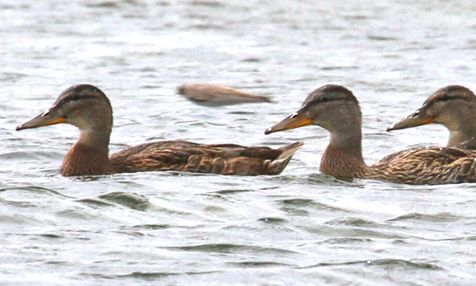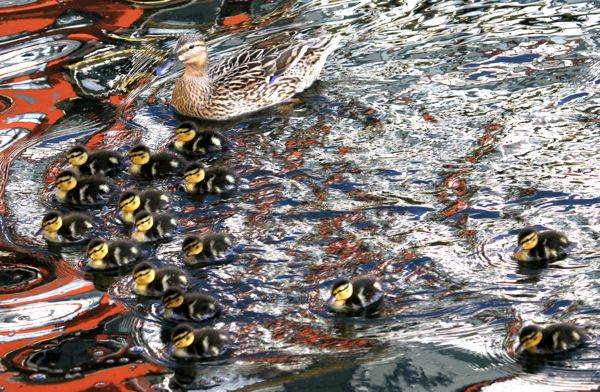

When I lived in the Midlands of the UK, away from the bussle of London’s controlled airspace, one of my pleasures on an evening was to hire a light aircraft at my local airfield and tootle off for an hour or so practicing maneoveurs and generally enjoying the sunset – all very peaceful.
Except, one evening when I was out tootling above the Cotswolds; like a flash, an RAF Tornado jet whooshed from under me, matching my track but far exceeding my speed, and all uncomfortably close – a disappearing dot before I could blink.
In fact, he was probably a good 500 ft below me and certainly had on-board radar – so nothing actually dangerous going on. (There’s a popular myth – that may be true – that on such occasions the military use light aircraft for practice interception.)
Anyhow, it made an impression on me, and today the memory returned unbidden with these two photographs snapped at the Rick Pond in Hampton Court Park. They show a Sand Martin in a low-level, high speed pass over a convoy of ducklings – as bemused, no doubt, as I was 4000 feet above the Cotswolds (Figs 1 & 2).

I’d been trying to catch the Martins’ aerobatic fly-catching with no success, and started snapping the ducks more as a gesture of resigned failure. I only spotted the Martin when I downloaded the flash card.
This type of ‘buzzing’ seems to be in the Sand Martin’s nature. People on the bank get similar treatment – the bird coming from behind, passing within inches of heads, as if honing their own targeting systems.
I’d left the camera in rapid fire mode of 8 fps, so the time interval between the two photographs is known. If we also know the length of a duck, we can calculate the Martin’s speed, in ducks per second – or more tedious conventional units. So:
Assuming SML = 0.3m (Standard Mallard Length)
Time between pictures at 8 f.p.s = 0.125 s
Ducks passed between frames = 5.75 (use the grid to measure; one duck = 2 grid squares)
Bird Velocity = (5.75/0.125) = 46 ducks / second (Systeme Canard)
or (46×0.3) = 13.8 metres / second (SI)
0r (13.8×2.24) = 31 m.p.h.
There we have it. Hugely practicable and useful method for measurement of the velocity of birds over water 🙂
And this is quite possibly where the Sand Martins live. A short hop at 31 mph.


